= Weberbauerocereus horridispinus Rauh & Backeb. in Backeb.
Descr. Cact. Nov. 27. 1956 Backeb.
Accepted Scientific Name: Weberbauerocereus weberbaueri (K.Schum. ex Vaupel) Backeb.
Descr. Cact. Nov. 27. 1956 Backeb.

Haageocereus weberbaueri var. horridispinus (Weberbauerocereus horridispinus) Photo by: Valentino Vallicelli
Origin and Habitat: Arequipa, Arequipa, Peru
Altitude: 2200-2300m
Habitat: Grows together with Arequipa rettigiiSN|3813]]SN|3813]].
Synonyms:
See all synonyms of Weberbauerocereus weberbaueri
Description: Weberbauerocereus horridispinusSN|8789]]SN|8789]] is one of the geographical form of the morphologically variable Weberbauerocereus weberbaueriSN|8785]]SN|8785]]. Some of its morphological and geographical variant was early classified as different independent species, but nowadays all this plant are considered part of a multiform species, where each form is linked to others by populations of plants with intermediate characteristics. Weberbauerocereus horridispinusSN|8789]]SN|8789]] has stouter spines and large yellowish-brown or orangish felty areoles.
Habit: Ii is a very spiny shrubby or columnar cactus, branching basally, 1 to 6 m high depending on the substrate and, perhaps, the rainfall. Occasionally may form treelike specimens with dozens of branches.
Stems: numerous, upright or curving, grey-green, 6-10(-15) cm in diameter.
Ribs: 14-22, more or less tuberculate.
Areoles: Usually very thick, to 8 mm in diameter, with long greyish-yellow or orangish wool.
Central spines: 6-8(-10), stout, brownish, 6-10 cm long.
Radial spines: 20-60, thin, yellowish brown, needle-like,1-1,5 cm long.
Flowers: Borne near the stem tips, 6-11 cm long, 2-4,5 cm wide, quite unusual in that their colour changes from a pale green-yellow (or whitish) upon opening to a delicate purple-pink on maturing. Often with flowers of different colours on the same plant, raising the possibility that the plants can be pollinated by both bats and hummingbirds. Outer tepals dull greenish-brown. Floral tubes curving slightly or A-shaped, with short brown hairs dull reddish-brown or greenish-white. It is self-compatible.
Fruits: Globose, to 4 cm long, yellowish orange, with short woolly hairs, lightly sweet and edible, though somewhat mealy.
Seeds. Black.
Bibliography: Major references and further lectures
1) Edward Anderson “The Cactus family” Timber Press, Incorporated, 2001
2) James Cullen, Sabina G. Knees, H. Suzanne Cubey "The European Garden Flora Flowering Plants: A Manual for the Identification of Plants Cultivated in Europe, Both Out-of-Doors and Under Glass" Cambridge University Press, 11/Aug/2011
3) David R Hunt; Nigel P Taylor; Graham Charles; International Cactaceae Systematics Group. "The New Cactus Lexicon" dh books, 2006
4) David Yetman “The Great Cacti: Ethnobotany & Biogeography” University of Arizona Press, 2007
5) Sahley, C.T. "Bat and Hummingbird pollination of an autotetraploid columnar cactus, Weberbauerocereus weberbaueri (Cactaceae)." American Journal of Botany, 83: 1329-1336, 1996
6) Haustein, E. “Der Kosmos Kakteenfuehrer (the Kosmos Cactus Guide)” United States, Balogh Scientific Books 01/Dec/1998
7) David Whyte Macdonald “The encyclopedia of mammals” Oxford University Press, 10/Dec/2009
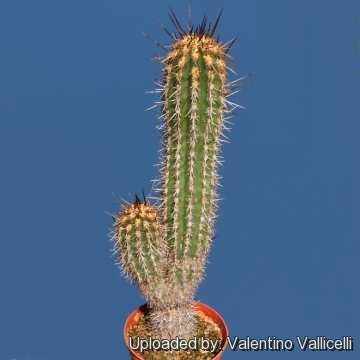 Haageocereus weberbaueri var. horridispinus (Weberbauerocereus horridispinus) Photo by: Valentino Vallicelli
Haageocereus weberbaueri var. horridispinus (Weberbauerocereus horridispinus) Photo by: Valentino Vallicelli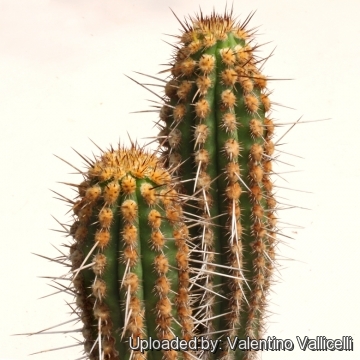 Haageocereus weberbaueri var. horridispinus (Weberbauerocereus horridispinus) Photo by: Valentino Vallicelli
Haageocereus weberbaueri var. horridispinus (Weberbauerocereus horridispinus) Photo by: Valentino Vallicelli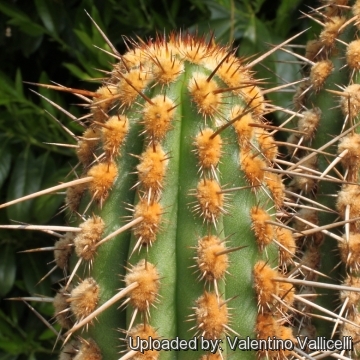 Haageocereus weberbaueri var. horridispinus (Weberbauerocereus horridispinus) Photo by: Valentino Vallicelli
Haageocereus weberbaueri var. horridispinus (Weberbauerocereus horridispinus) Photo by: Valentino Vallicelli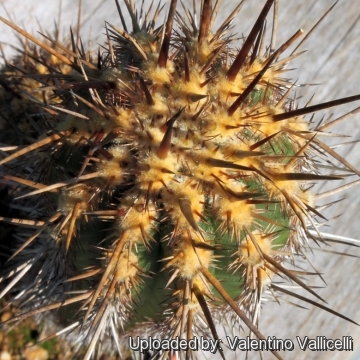 Haageocereus weberbaueri var. horridispinus (Weberbauerocereus horridispinus) Photo by: Valentino Vallicelli
Haageocereus weberbaueri var. horridispinus (Weberbauerocereus horridispinus) Photo by: Valentino Vallicelli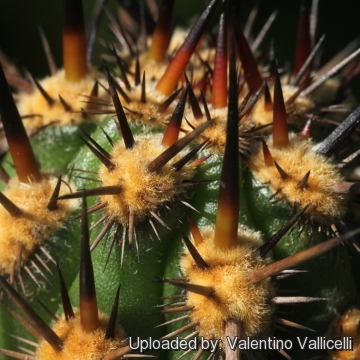 Haageocereus weberbaueri var. horridispinus (Weberbauerocereus horridispinus) Photo by: Valentino Vallicelli
Haageocereus weberbaueri var. horridispinus (Weberbauerocereus horridispinus) Photo by: Valentino Vallicelli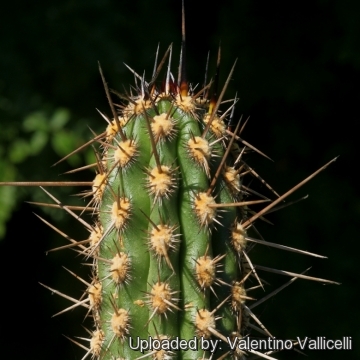 Haageocereus weberbaueri var. horridispinus (Weberbauerocereus horridispinus) Photo by: Valentino Vallicelli
Haageocereus weberbaueri var. horridispinus (Weberbauerocereus horridispinus) Photo by: Valentino Vallicelli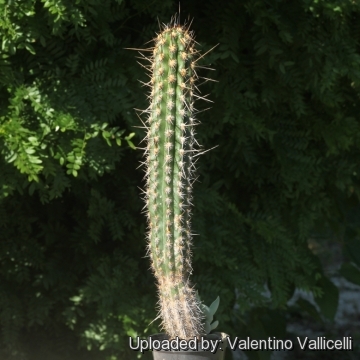 Haageocereus weberbaueri var. horridispinus (Weberbauerocereus horridispinus) Photo by: Valentino Vallicelli
Haageocereus weberbaueri var. horridispinus (Weberbauerocereus horridispinus) Photo by: Valentino VallicelliSend a photo of this plant.The gallery now contains thousands of pictures, however it is possible to do even more. We are, of course, seeking photos of species not yet shown in the gallery but not only that, we are also looking for better pictures than those already present.
Read More... Cultivation and Propagation: Weberbauerocereus horridispinusSN|8785]]SN|8789]] (= Weberbauerocereus weberbaueriSN|8789]]SN|8785]]) is a relatively easy, but slow growing species.
Growth rate: Slow growing.
Soil: Grow it in a rich and particularly draining substratum, as it is very sensitive to rottenness when in presence of humidity and low temperatures and let the soil dry out between waterings.
Repotting: Repot in the spring, when their roots become cramped. Generally, they should be repotted every other year in order to provide fresh soil. After repotting, do not water for a week or more. Use pot with good drainage.
Fertilization: It grows much faster with a low nitrogen content fertilizer in spring and summer.
Watering: Water regularly from March till October, the thin, fibrous roots suffer if there is humidity, therefore the plant should be watered only when the surrounding terrain is dry. Keep dry as soon as the temperature starts dropping in October and keep it perfectly dry in winter at temperatures from 5 to 15 degrees centigrade. Preferable not to water on overcast days, humid days or cold winter days.
Hardiness: They need to be kept in a cool place during winter rest and are resistent tolight frost if kept on the dry side prior to, and during, cold weather with little danger of being killed. They are hardy to -2 C ° C or less, for short periods. However in cultivation it is better not to expose it to temperatures lower than 5° C, even if in an aerated and protected location. It tends to rot in winter during the resting phase, if kept wet. In the rest period no high atmospheric humidity!! Outdoors this plant is very adaptable, as long as you avoid excessive humidity in the winter months.
Sun Exposure: Exposure: It need full sun exposures with ample airflow for best appearance.
Use: The fruits are consumed by local woman when sour (still green) during the menopause to help calm the consumer and alleviate her discomfort. The dry wood can be used for kindling, but is rather soft and lacking in substance.
Pests & diseases: It may be attractive to a variety of insects, but plants in good condition should be nearly pest-free, particularly if they are grown in a mineral potting-mix, with good exposure and ventilation. Nonetheless, there are several pests to watch for:
- Red spiders: Red spiders may be effectively rubbed up by watering the infested plants from above.
- Mealy bugs: Mealy bugs occasionally develop aerial into the new growth among the wool with disfiguring results, but the worst types develop underground on the roots and are invisible except by their effects.
- Scales: Scales are rarely a problem.
- Rot: Rot is only a minor problem with cacti if the plants are watered and “aired” correctly. If they are not, fungicides won't help all that much. To prevent rottenness it is also advisable to surround its root neck by very rough sand or grit, this help a fast water drainage.
Propagation: Almost exclusively by seed. The seeds can be sown in pots of fine, well-drained sandy soil, any time during the spring when temperatures are warm. The seedlings should not be disturbed until they are well rooted after which they can be planted separately in small pots.

















